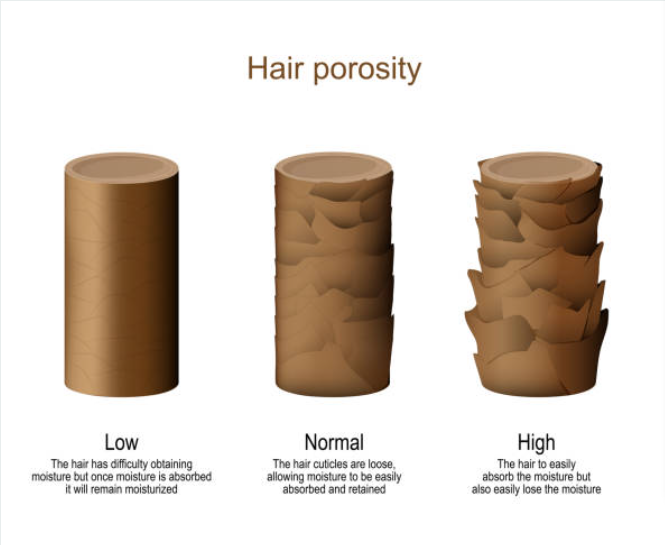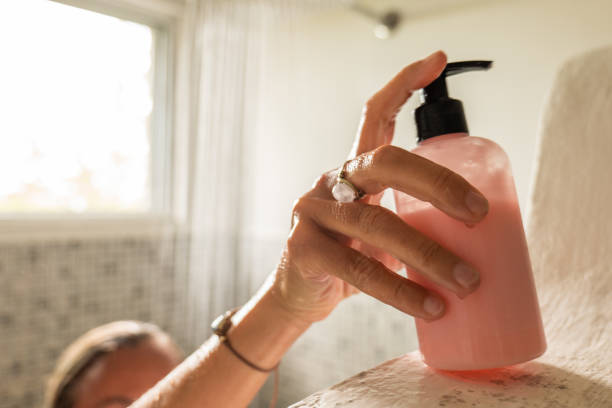Hair porosity describes the hair’s ability to absorb moisture which is determined by how your cuticles lay against your hair. Here are 3 types of hair porosity—high, medium and low. Hair porosity is determined by gene in general, but external factors like environment damage, heat, and chemical process could make influence as well.

Hair porosity determines what your hair like and dislike, as well as what it need and needn’t. Knowing your hair porosity will help you decide what care treatments and hair products work best for your hair type.
The different types of hair porosity:
- High porosity—cuticles are open and fanned out
- Medium porosity—cuticles are less tight and interchangeable
- Low porosity—cuticles are tightly shut and closed
How to figure out your hair porosity
1. Check out how long your hair takes to get fully drenched with water
When washing hair in the sink or in the shower just allow the water run on top of your hair and to see if hair immediately would soak up water. When you wet your hair, if your hair repel water and takes a long time to absorb the water reflects whether your cuticles are shut.
- If you need hot water to lift up the cuticles so that your hair could absorb the water, then it is low porosity. Your low porous hair does not absorb moisture well.
- If your hair takes in the water and saturate immediately, that means your cuticles are open and you have high porosity hair.
- If you're smack dab in the middle, it’s normal/ medium porosity.
2. Identify how your hair perform about hair products

When you are applying hair products like leave in conditioner, observe that the product just sit on the top of it or soak up the products immediately.
- If it takes a while to absorb products and there are white residues, flaking or build up left on your hair, then you have low porosity hair.
- If the products are absorbed quickly and no residue at all, then it is high porosity hair.
3. Determine how long does it take to dry your hair
Does it take hours to dry your hair or by the time you finish one side, the other side has been dry?
- If your hair takes pretty long time to dry itself, then it might be low porosity. The water and moisture have been locked into your hair.
- If your hair dry quickly, the cuticles are open and the hair absorb and lost moisture very quick. This is high porosity hair.
4. Find out how long the moisture can be retained
If your hair becomes soft and fluffy for days after getting the moisture, and it goes back to dryness one day, then you have low porosity hair.
But if your hair absorbs moisture and gets moisturized no longer than a day or dries out quickly, then it is high porosity hair. It might be stiff when your hair lost the moisture no matter how soft and oily it was.
5. Identify how oil work in your hair routine
If the oil make your hair get oily and greasy and it doesn’t matter in your moisture routine once you have good product, then it is low porosity hair. The cream and moisturizer are enough and your hair can work well without oil.
If your hair can not get moisturize without oil incorporated. Then you have high porosity hair. The oil is essential and you absolutely have to include oil in your moisture routine.
Maybe in the first test, you identify your hair as low porosity but in the next test, the result comes high porosity. The majority of your result is your porosity. The key to master high porosity hair is finding the right layer of products to moisturize and trap in moisture seal cuticles. Learn what ingredients your hair like and how to layer the products is more important than the actual products.




